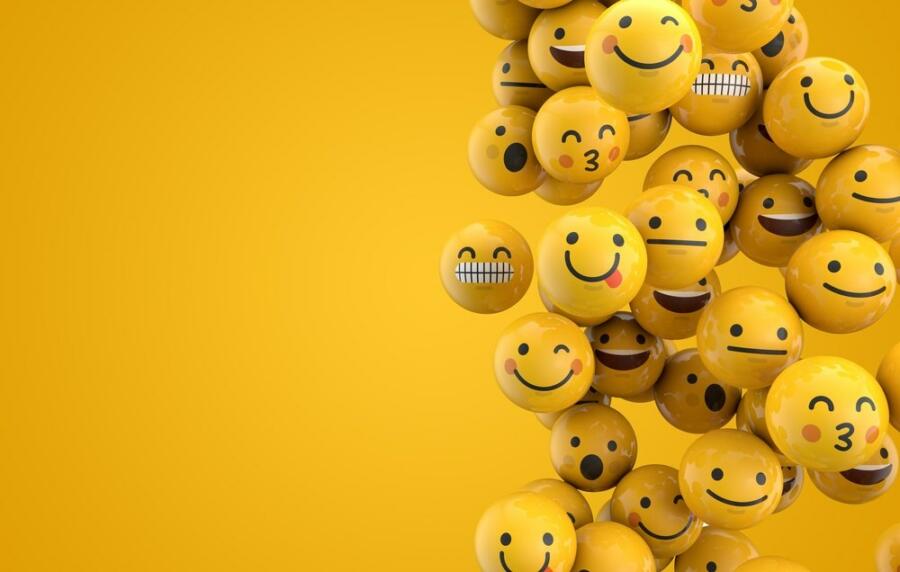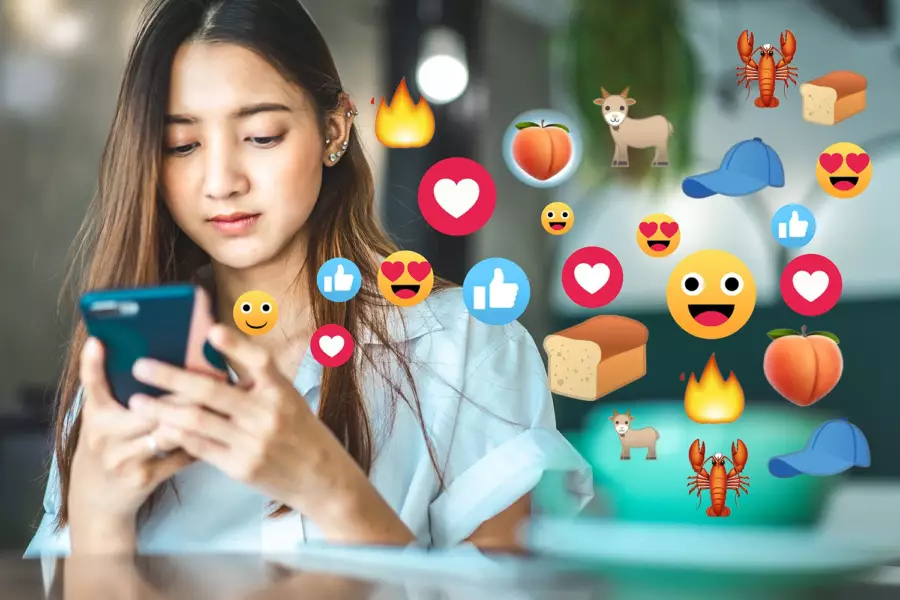People from all generations are using emojis more than ever. These help you eloquently communicate your feelings and emotions while enhancing sharing experience without typing.
If you’ve ever encountered a tongue-out emoji and wondered what it meant, this in-depth emoji article may be helpful. A person can’t remember every emoji and how to use them, but it is feasible to become familiar with the most significant and well-known ones. The list of numerous emojis and their meanings you can find below.
Emojis are what?
Emojis may be simplified representations of many human emotions, living things, objects, and even certain symbols. These may be used in virtually any casual communication, including text messaging, social media platforms, and online forums. By pressing on an icon that looks like a smiling face, users of many chat-based programs may quickly find emojis. Major operating systems’ keyboards also include these.
What Is the Origin of Emojis?

Although they weren’t the first of their sort, the contemporary emojis you are familiar with and enjoy gained popularity in 2011. You need to look at our civilization’s early past to understand how much we depended on pictures to convey ideas.
Humans are naturally visual beings who enjoy the capacity to express their feelings through visuals. For this reason, circa 3200 BC, humanity relied on hieroglyphics to communicate with others. Over 5,000 years later, we’re still enhancing our communications using symbols. We’ve advanced to employing emoticons and emojis in digital form rather than ancient scribes!
Speaking of contemporary communication, the development of the emoticon had an impact on the inspiration for the emoji. An emoticon is a text-based smiley face. An emoji is a picture that represents an expression and is standardized across several platforms, including iOS, Windows, OS X, and Android.
Who Created the Emoji?
Although Scott Fahlman is credited with creating the first text-based emoji, Shigetaka Kurita of Japan is credited with creating the first pixel-based emoji images. Kurita became aware of the significance of these icons after a pager producer saw a drop in sales after eliminating their sole emoji.
More than 150 original emojis were made available for mobile phones later that year. It had initially started as a fun initiative and became a national hit. These original emojis could appear somewhat old at first sight if you weren’t a youngster of the 1990s. After all, Apple added emoji support to their messaging app in 2011. They completely transformed the game.
Soon after, almost all major smartphone carriers started integrating emojis into their operating systems. Shigetaka Kurita transformed the digital messaging sector with straightforward winking grins. Moreover, pixelate heart graphics before the high-five emoji were considered. Although he wasn’t saving lives, he significantly impacted how we communicate online.
Uses for Emojis

We are sending conflicting signals across the Internet! Tongue Out Emoji is excellent tool for establishing the tone of digital communications if that hasn’t become evident by this point. Although dismissing them as a pillar of millennial culture is simple, without these cutting-edge phrases.
Emoji room service is now available at the Aloft hotel in New York! Hotel visitors may select a package from a menu and send the matching emoji to the front desk. Hotel employees will bring things that match the emojis on the menu, whether they have the munchies or just a new phone charger.
The Emoji of the Future
Emojis are here to stay, even though it’s difficult to foresee what the future may contain for them. Even The Emoji Movie debuted in July 2017! Even though it didn’t perform very well at the box office, the movie shows how used we’ve become to our favorite emoticons.
Apple revealed they would introduce “Animoji” in September 2017, describing them as animated versions of standard emoticons. Using the Facial Motion Capture tool, users may even alter their animoji to mimic their natural faces. If past trends are any indication, it may someday be something that all smartphone service providers give their clients. As of now, expressive emojis will let us have more dynamic interactions!
How to Use Romantically Attractive Emojis: A Guide

The 1990s and the eras before them are commonly used to describe these passionate times. Although often embarrassing, it was always exhilarating.
1. Flames
Flames are a good and intelligent hint that the sender thinks you’re hot or that anything you’re talking about with them. Hot is beneficial since it’s the ideal temperature for romance. It is sizzling unless your hair, house, or automobile is on fire. The lighted cigarette emoji has the same connotations as smoking since it represents smoking.
2. Heart
English speakers are constrain to using a single word and a small selection of emojis to depict it. As a result, hearts are, at best, casual and should not be interpreted as proof that your crush is into you or the burrito they had for lunch. It’s better never to trust a heart until you have spoken to this person face-to-face and established that you genuinely love each other.
3. Tongue Out Emoji
This Tongue Out Emoji has the winky-eyed, tongue-out emoji expression is the game’s most overtly sexist emoji and is almost solely used by horndogs and perverts. It is the romantic counterpart of perusing Tinder.
Most likely, whoever sent it wants to snoop around in your underwear. However, you shouldn’t approach any scumbag who would mail that garbage. Unless you are a pervert or a horndog, in which case, proceed as appropriate.
4. Blushing with a smile
Therefore, flushing is a symptom of intense emotional turmoil. You can tell you’ve positively affected someone’s physiological well-being if they send you a blushing, smiling face. Thus, making out with this individual is about three steps away.
Any three blushing, happy expressions will point you toward heavy petting territory. Tongue out Emoji is best, but if you get the ratchet stepsister of the blushing happy face, the blushing bulging-eyes face. There’s a decent possibility that you uttered something awkward.
Also read: Why is The Thumbs Up Emoji Offensive To Generation Z?
























































